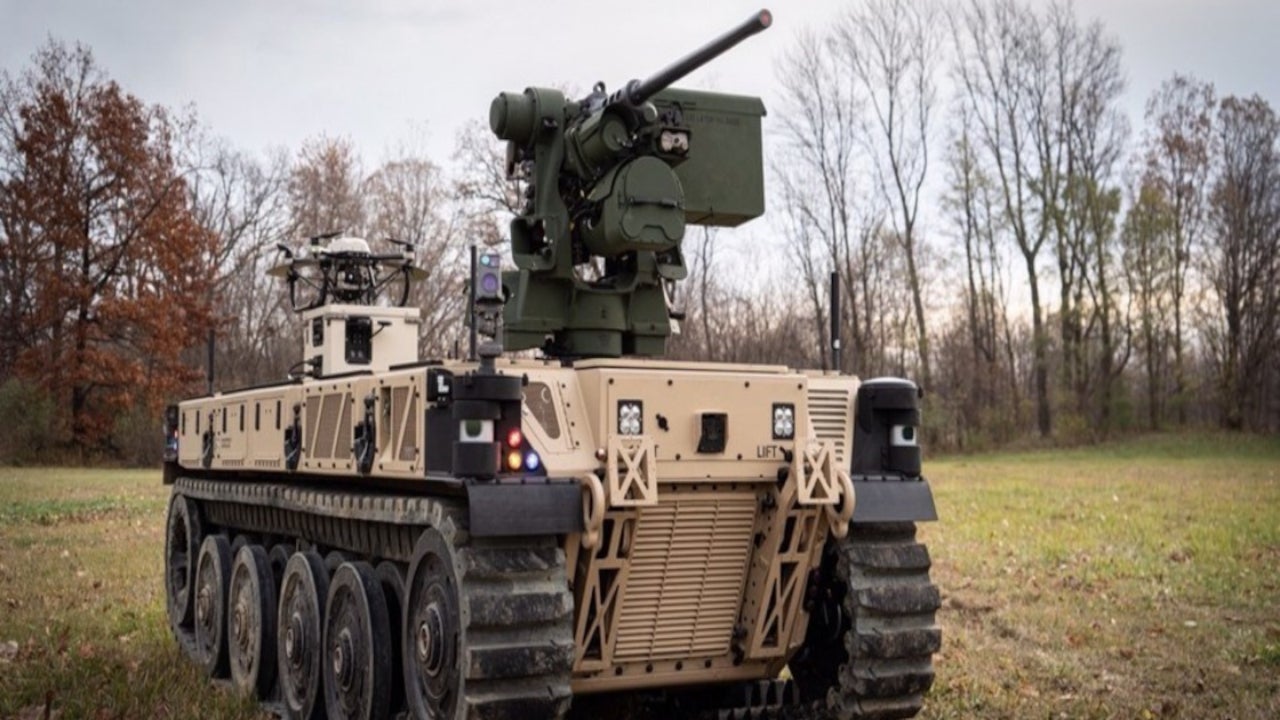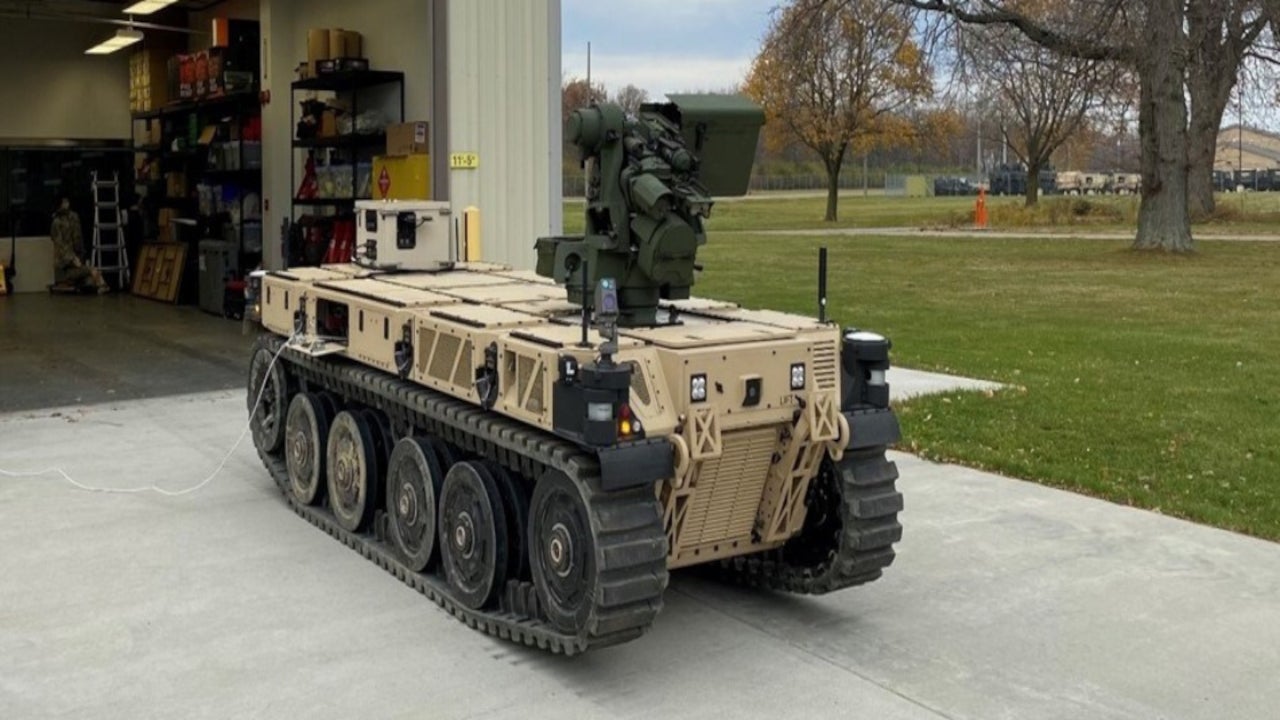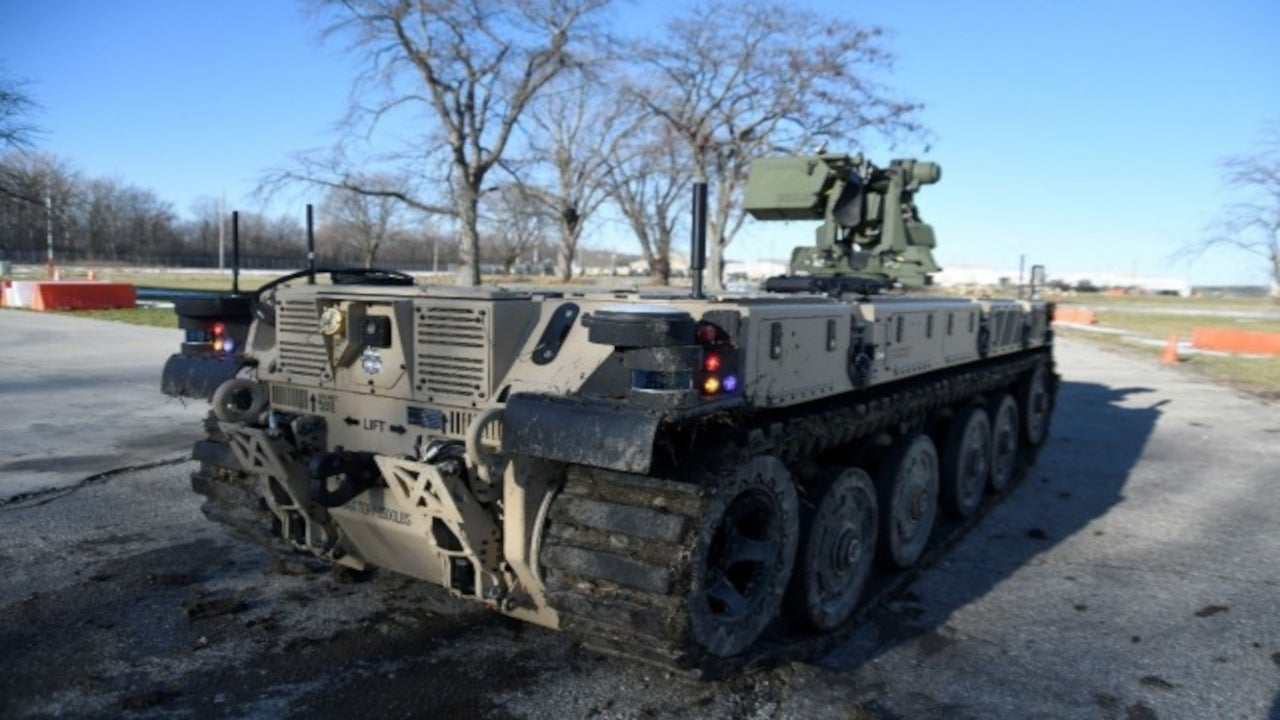Robotic Combat Vehicle-Light (RCV-L) is a small and expandable unmanned combat vehicle jointly developed by British multi-national defence technology company QinetiQ Group and American military vehicles developer Pratt Miller Defence to support ground-combat operations.
QinetiQ’s subsidiary QinetiQ North America and Pratt Miller collaborated to work on the US Army’s robotic combat vehicle (RCV) programme at the Association of the United States Army (AUSA) Annual Meeting in 2019. Pratt Miller was acquired by Oshkosh, a military vehicles manufacturer based in the US, in January 2021.
The US Army is expected to start the engineering and manufacturing development phase of the RCV-L programme in 2023.
RCV-L development background
QinetiQ North America and Pratt Miller won the RCV-L prototype project, sponsored by the US Army, through the National Advanced Mobility Consortium, an alliance of government agencies, industry, and academia to provide ground vehicle system technologies to the warfighter, in March 2020.
The scope of the prototype project involves the delivery of four RCV-Light vehicles to the US Army and includes an option for the procurement of up to 16 more units.
The partners delivered the first RCV-L platform to the US Army Combat Capabilities Development Command’s (CCDC) Ground Vehicle Systems Centre (GVSC) in November 2020, while the remaining three units were delivered by the end of 2020.
The unmanned vehicles have been developed to be used in the Manned-Unmanned Teaming (MUM-T) Soldier Operational Experiment at Fort Hood, Texas, in 2022 to advance autonomous capabilities. The MUM-T concept involves the deployment of manned vehicles in a teaming arrangement with unmanned resources and technologies within a co-ordinated military mission.
Manoeuvre testing will be conducted on the RCV-L prototypes at the Camp Grayling military training facility in Michigan throughout 2021 to evaluate the feasibility of integrating unmanned systems into ground combat vehicle formations.
Robotic Combat Vehicle–Light features
The RCV-L is a purpose-built, compact, diesel-electric hybrid unmanned ground combat vehicle (UGCV) primarily intended for reconnaissance. The vehicle is based on Pratt Miller’s Expeditionary Modular Autonomous Vehicle (EMAV), a robotic vehicle designed by the company for the US Marine Corps.
It is incorporated with QinetiQ’s modular open system architecture (MOSA) robotic control systems for improved flexibility and payload-agnostic capabilities. It can be transported by military aircraft to remote locations.
Weighing 3,855.53kg, the autonomous vehicle has a top speed of 64.37km/h. Its modular platform allows to carry a maximum payload capacity of 3,175.14kg. The unmanned vehicle is driven by a hybrid generator which powers high-voltage batteries, facilitating a silent watch and stealth-like capabilities.
The RCV-L can be either remotely controlled by a soldier or can be operated semi-autonomously along the programmed routes. Its autonomous capabilities are expected to enhance warfighter capabilities and mobility and lethality on the battlefield, while improving the efficiency of transporting supplies.
Weapons and equipment
The RCV-L version of the EMAV will provide the US Army a mature high-performance platform with reduced risk and high future growth potential.
The robotic combat vehicle is equipped with a remote turret for the 25mm main gun, high-resolution 360° situational awareness cameras, sensors, and navigation equipment. It can be fitted with a Tethered Unmanned Aerial System, a small drone system, to perform aerial reconnaissance while the vehicle stays at a safe distance.
The M153 Common Remotely Operated Weapons Station II (CROWS II), the 0.50-calibre M2 machine gun, and the 40mm MK19 Mod 3 automatic grenade launcher are also being tested on the RCV-L prototype.
Host platform details
The RCV-L prototypes were paired with a Mission Enabling Technology Demonstrator (MET-D) vehicle, a highly modified Bradley fighting vehicle for manned-unmanned teaming process at the Rellis campus of the Texas A&M University, in February 2021. The MET-Ds are designed to serve as a platform for soldiers to operate RCVs.
Developed by GVSC, the MET-D project is aims to deliver advanced technology with internal operator stations to control RCV platforms. Each MET-D features four RCV control stations, of which two are for mobility operations and two for weapons control, autonomy and drive-by-wire kits, and a laser detection and ranging kit for optional manned operation.
The features will allow soldiers to get down and remotely control the sensors and MET-D platform. To be implemented in phases, the MUM-T experiment will feature six MET-Ds controlling 12 RCVs.






